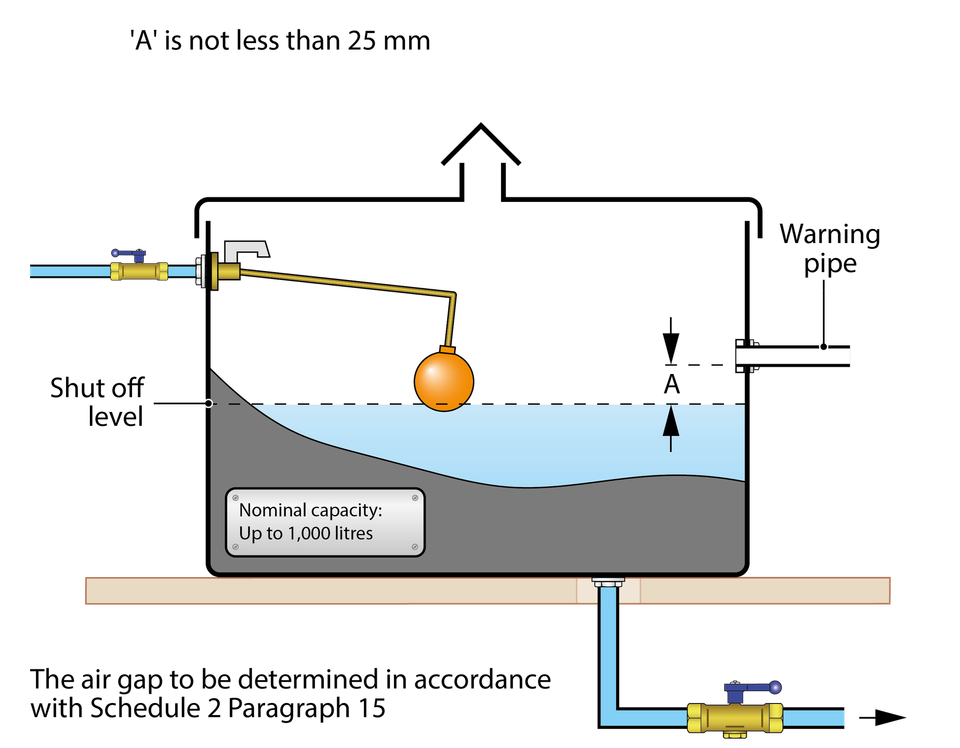Installation: FAQs
Are there any specific requirements for cold water storage cistern overflow and warning arrangements?
Every cold water storage cistern must be fitted with an overflow pipe.
To help minimise waste a suitable means of warning of an impending overflow must also be installed. A warning pipe is commonly used for this purpose, but with the local water undertaker’s agreement alternatives may be fitted. Although usually separate a combined overflow/warning pipe may be accepted on cisterns with a capacity of 1,000 litres or less.
Overflow and warning pipes must be positioned so as to exclude light and insects. A screen with a mesh size no greater than 0.65 mm (opening) is typically used to prevent the ingress of insects and other foreign bodies. If an insect screen is installed it should be vertically and removable.
Overflow and warning pipes should be installed on a downward inclined plane and not discharge into any other cistern.
The discharge from the overflow and/or warning pipe should be safe and conspicuous. If discharging to drain a visible air brake, giving fluid category 5 backflow protection in the form of an air break to drain conforming to the design specification given in EN 1717 must be installed.
If a common warning pipe is used the location of the cistern overflowing must be readily identifiable.
A warning/overflow pipe should be at least 19 mm (internal diameter) and capable of accommodating all possible flow rates i.e. the maximum inflow under fault conditions. The effect of any screen on the nominal flow capacity must be taken into account when determining the size of an overflow.



Feedback
To improve this information please give us your feedback >
Disclaimer
Uncontrolled if downloaded. This is informative, non-statutory guidance and intended for general guidance purposes only; it is subject to change.
Compliance with this information should not be relied upon as guaranteeing no enforcement action will be taken by water undertakers. Water Regs UK accepts no liability for loss, indirect or consequential loss arising from or in connection with this guidance document.
